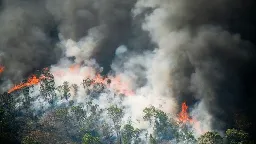
Would you say that it's a very significant amount of zeros?
Sawdust would be an improvement. It's just fiber, desperately absent fiber.
p < .0001337

>A highway camera photo shows traffic in FortMcMurray jammed in the southbound lane of Highway 63 on the north side of the Athabasca River. The image was captured at 3:11 p.m. MT, about an hour after an evacuation order was issued for four neighbourhoods. (511 Alberta)
Evacuation order issued as wildfire threatening Fort McMurray draws closer https://www.cbc.ca/news/canada/edmonton/alberta-wildfire-grande-prairie-fort-mcmurray-1.7203695
I mean integrated directly into the interface of the apps. Example: they have an "Editor" tab for Word that can analyze and get into the document directly. I expect that this will be where the ChatGPT tools will be implemented. Or is there some professional version of ChatGPT that does that already? I have only tested the free one.
Water-rich Switzerland controls Western Europe’s taps — and wants it to stay that way. Its drought-ridden neighbors are getting nervous.
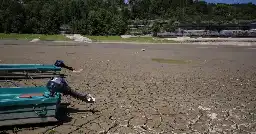
cross-posted from: https://lemmy.world/post/15351530
> Water-rich Switzerland controls Western Europe’s taps — and wants it to stay that way. Its drought-ridden neighbors are getting nervous. > > At the western edge of Lake Geneva, where the mighty Rhône river squeezes through a narrow dam, a blunder of French diplomacy is carved into stone for all to see. > > The inscription, mounted on the walls of an old industrial building, commemorates the 1884 accord between three Swiss cantons that have regulated the water levels of this vast Alpine lake ever since. It does not mention France — even though some 40 percent of the lake is French territory. > > “France, for some reason, wasn’t part of the contract,” said Jérôme Barras as he unlocked a gate below the epigraph to inspect a hydropower plant under the dam he has managed for more than a decade. > > When the agreement was renewed and a new dam was built a century later, Paris still wasn’t interested. > > The French government now regrets that. > > … > > And France has suddenly realized it can’t control that tap as it battles water shortages, destructive droughts and baking heat.
Wait, copilot and ChatGPT use are skills? Isn’t that a bit like how using a phone is a skill?
It's about at the same level as "Microsoft Office" as a skill. They're probably working on embedding ChatGPT and DALL-E in that suite. I've actually asked ChatGPT for some tips on using advanced features that I didn't know about and it worked nicely.
Hey, I have re read your comment a few times. Important info, but unsure how it relates to my comment. Rich people don’t contribute that much to C02?
There are 2 necessary changes as layers in this context:
-
There are also studies that show the GHGs for "rich people's investments". This is important because they are in the way of necessary adaptation and mitigation. We can't do anything meaningful about climate and biosphere because that would require ending profiteering from planetary destruction, it would require decommodification.
-
Rich people's consumption is excessive for anything. Not just their carbon footprint, but their ecological footprint. But they are a small minority, especially the richest. Being a small minority means that if they lose their... wealth and become wage workers, that's going mean only a decrease of 15% GHGs. This 15% is not meaningful to avert ruining the planet's surface. We need more than 100% (zero emissions and then removing carbon dioxide from the atmosphere). This means that EVERYONE has to participate, which also means that we need cooperation. And you don't have cooperation in a capitalist class society with all this "rat race" going on, you can't, we're literally all enemies (competitors) in this game.
So they can tell me how to live my life?
That's one side of it, yes. To have any meaningful action, all sides of economic activity have to change, we need decreases in production (supply), but also in demand (consumption). If only production decreases, the demand side goes nuts and there's hyperinflation and other problems. If only demand decreases (unlikely), the production side, which is owned by rich people, may decide to force and coerce an increase in demand somehow, as has been happening at least since the end of WW2.
Here, a game: https://play.half.earth/
What would even be the design solution without massive empty space? Add a lot of columns? Make the long content horizontal instead of vertical?
The impossible love of fossil fuel companies for carbon taxes - ScienceDirect
Economists agree that carbon taxes are the most effective solution for climate change mitigation. But where do fossil fuel companies stand on carbon taxes? I analyse how the 100 largest oil and gas companies communicate on carbon taxes. Surprisingly, I find that 54% of companies that have a policy on carbon taxes support them (78% for the 50 largest). This is puzzling as an effective carbon tax should reduce the revenues and reserve value of fossil fuel companies. To understand this paradox, I offer non-mutually exclusive reasons why fossil fuel companies might support carbon taxes. Oil and gas companies could use a carbon tax to get rid of the competition from coal, create a level playing field and remove regulatory uncertainty. Or they think that these taxes will not affect them because demand for oil and gas is inelastic or that international coordination will fail and lead to leakages. Finally, it could be that this is simply a communication exercise. A carbon tax helps them shift the responsibility from fossil fuel companies to customers, voters and elected officials.

While that needs to stop entirely, the 1%' carbon footprint (yes, it applies to them too, this is what everyone here is actually pointing out) sums up to about 15% of global GHG emissions at the consumption level. Huge, but they are few, they aren't "masses".
We need GHG emissions to drop at least 100% (to 0%) and then we need to remove carbon (so that's negative emissions) to get closer to the safer atmospheric CO2.
I'm not sure why it's so difficult to understand. Eating lower down the trophic levels is energy efficient, and the energy level is proportional to environmental destruction, water use, and pollution. This is especially relevant if you have a large population to maintain (food security), which is the case for humans.
Eating up the world’s food web and the human trophic level | PNAS
Abstract
Trophic levels are critical for synthesizing species’ diets, depicting energy pathways, understanding food web dynamics and ecosystem functioning, and monitoring ecosystem health. Specifically, trophic levels describe the position of species in a food web, from primary producers to apex predators (range, 1–5). Small differences in trophic level can reflect large differences in diet. Although trophic levels are among the most basic information collected for animals in ecosystems, a human trophic level (HTL) has never been defined. Here, we find a global HTL of 2.21, i.e., the trophic level of anchoveta. This value has increased with time, consistent with the global trend toward diets higher in meat. National HTLs ranging between 2.04 and 2.57 reflect a broad diversity of diet, although cluster analysis of countries with similar dietary trends reveals only five major groups. We find significant links between socio-economic and environmental indicators and global dietary trends. We demonstrate that the HTL is a synthetic index to monitor human diets and provides a baseline to compare diets between countries.
This first estimate of HTL at 2.21, i.e., a trophic level similar to anchoveta and pigs, quantifies the position of humans in the food web and challenges the perception of humans as top predators (2). Humans dominate ecosystems through changes in land use, biogeochemical cycling, biodiversity, and climate (11, 13, 14). It is not sufficient to separate humans from analyses of ecosystem processes, because there are no remaining ecosystems outside of human influence (15). Thus, investigations of ecosystems, without accounting for the presence of humans, are incomplete (13). There is a variety of other ecological indicators based on trophic ecology theory or diets, e.g., the omnivory index, that may also prove useful in assessing the impact of humans in the functioning of ecosystems. However, a first estimate of an HTL gives us a basic tool that places humans as components of the ecosystem and assists in further comprehending energy pathways, the impact of human resource use, and the structure and functioning of ecosystems.
The global increase in HTL is consistent with the nutrition transition that is expected to continue for several decades (16, 17) from plant-based diets toward diets higher in meat and dairy consumption (18–22). This 0.15 increase in HTL from 1961 to 2009 is mainly due to the increased consumption of fat and meat (SI Appendix, Figs. S5–S8), as opposed to a shift toward the consumption of species with higher trophic levels. In fact, we find that the mean trophic level of terrestrial animals that are consumed by humans has only slightly increased (by 0.01 or 0.5%) due to the higher proportion of pork and poultry in the diet (SI Appendix, Fig. S11_A_), whereas that of marine animals has decreased markedly from 2.88 in 1961 to 2.69 in 2009 (SI Appendix, Fig. S11_B_). This decline in the trophic levels of marine food items in human diets is consistent with the global decline in the mean trophic level of marine fisheries catches. This decline has been related to the consequences of fishing pressures on marine predators (23), although changes in the characteristics of fisheries over time may also influence this trend (24).
The global convergence in HTL is consistent with the convergence in diet structure between countries with diverse levels of development (18, 19), and in agreement with previous studies of the FAO (17, 25). Globalization and economic development facilitate the access to diverse foodstuffs and can enhance the rate of this convergence (18, 26). For India, China, and countries in groups 1–3, HTLs are low and rising. With economic growth, these countries are gaining the ability to support the human preference for high meat diets (18, 19, 26). For countries in group 4, the nutrition transition has reached a point where health problems associated with high fat and meat diets (i.e., high HTLs) have led to changes in policy and government-run education programs that encourage these populations to shift to more plant-based diets [i.e., lower their HTL; SI Appendix, Figs. S4–S8 (18, 20, 22)]. Similarly, countries with high initial HTLs (i.e., group 5) show decreasing trends with time (Fig. 3). For Scandinavian countries, this decline is due to government policies promoting healthier diets (18, 22). For example, in 2011, Sweden consumed historically high levels of meat due to low market prices, leading the Swedish government into discussions of a Pigovian tax to reduce this consumption (27). Changes in diet in Mauritania (decreased meat and dairy consumption) and Mongolia (increased proportion of vegetables) are linked to increased urbanization and economic development and decreased nomadism.
the stem is sweet, I eat kohlrabi like apples (after removing the peel).
AI will be taken back.
spoiler
by avian influenza
Chidi's Mind Is Blown by the Time-Knife - The Good Place (Episode Highlight) https://www.youtube.com/watch?v=mhII8J_4Y1g
An oil-funded think tank backed by Hungarian Prime Minister Viktor Orbán is involved in organising widespread farmer protests in the run-up to the EU elections, DeSmog can reveal. Hardline farming groups pledged to “sweep away” EU decision-makers at a “lunch and discussion” event, which was hosted b...

An oil-funded think tank backed by Hungarian Prime Minister Viktor Orbán is involved in organising widespread farmer protests in the run-up to the EU elections, DeSmog can reveal. Hardline farming groups pledged to “sweep away” EU decision-makers at a “lunch and discussion” event, which was hosted b...

Campaigners say last-minute compromise plays into the hands of petrostates and industry influences

Organic agriculture has become synonymous with spreading manure. Veganic farming is cultivating a greener path.
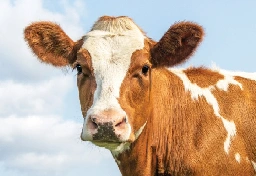

https://www.wired.com/story/the-us-government-has-a-microsoft-problem/
A highly misleading new documentary claims soil carbon storage can redeem the livestock industry – it’s all so much ‘moo-woo’, says the Guardian columnist George Monbiot

the movie is titled: Six Inches of Soil
The legal repression of activism has been fast and frightening, yet it won’t make protesters disappear and only sows division
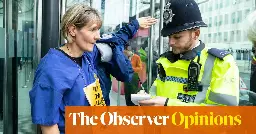
Cows are suffering on even the most “humane” dairy farms.
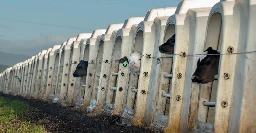
The first instalment of the FAO food systems roadmap is a key step in identifying pathways to achieve zero hunger without breaching the 1.5 °C climate change threshold. But future instalments should be more methodologically transparent, emphasize the need to reduce animal-sourced food consumption an...
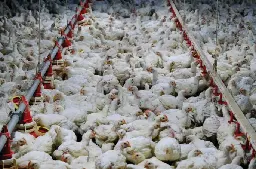
>The first instalment of the FAO food systems roadmap is a key step in identifying pathways to achieve zero hunger without breaching the 1.5 °C climate change threshold. But future instalments should be more methodologically transparent, emphasize the need to reduce animal-sourced food consumption and align with a holistic One Health approach.
A new report suggests the government might be funding the wrong solution.

A senior figure at the influential Institute of Economic Affairs (IEA) think tank contributed to a new documentary that spread numerous myths about climate change. Stephen Davies, an academic who has worked in educational outreach roles at the IEA since 2010, appeared several times in Climate The M...

Key policies to make Europe climate-neutral by 2050 are being weakened by looming elections and persistent protests from farmers

A new report signed by 200 climate researchers says we have the next decade to reduce emissions from factory farms, and most within five years.
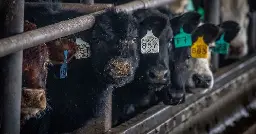
Financiers providing billion-dollar support for industrial livestock companies to expand leading to unsustainable rise in production
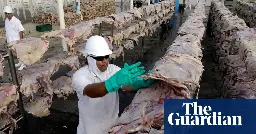
The report (PDF): https://feedbackglobal.org/wp-content/uploads/2024/03/Feedback-2024-Still-Butchering-the-Planet-Report.pdf
Blockades at facilities in Germany, the Netherlands, Norway and Sweden, with protests in Scotland and action expected in Denmark

> > > Jonas Kittelsen, a spokesperson for Extinction Rebellion Norway, said: “I’m ashamed to be a Norwegian. Norway profits massively from aggressively expanding our oil and gas sector, causing mass suffering and death globally. My government portrays us as better than the rest of the world, which we are not.” > > > > In the Netherlands, Extinction Rebellion and Scientist Rebellion were blocking the main access roads to Pernis refinery, the largest refinery in Europe, owned by Shell, which plans to increase and expand its North Sea oil and gas production. > > > > Bram Kroezen, a spokesperson for XR Netherlands, said: “The fossil industry and our governments want us to believe that gas from the North Sea is clean, but clean gas is a dirty lie.” > >
Experts break down this vocal phenomenon — most recently displayed by Sen. Katie Britt — and what it means in politics and pop culture today.

##Significance
The coming decades promise a transition from internal combustion engines to electric, and with it a greater relative contribution of nonexhaust sources to urban air pollution. A chief concern is particles generated from automotive brake wear, which have adverse impacts on health and the environment. Our study reports on the electrical properties of brake wear particles, demonstrating that up to 80% of these particles are electrically charged. We show evidence for surprisingly high numbers of elementary charges per particle and report on this number’s dependence on particle size and charge polarity. These findings suggest that control strategies that exploit the unique electrical properties of brake wear particles can be highly effective in mitigating this key emerging source of pollution.
##Abstract
Although the last several decades have seen a dramatic reduction in emissions from vehicular exhaust, nonexhaust emissions (e.g., brake and tire wear) represent an increasingly significant class of traffic-related particulate pollution. Aerosol particles emitted from the wear of automotive brake pads contribute roughly half of the particle mass attributed to nonexhaust sources, while their relative contribution to urban air pollution overall will almost certainly grow coinciding with vehicle fleet electrification and the transition to alternative fuels. To better understand the implications of this growing prominence, a more thorough understanding of the physicochemical properties of brake wear particles (BWPs) is needed. Here, we investigate the electrical properties of BWPs as emitted from ceramic and semi-metallic brake pads. We show that up to 80% of BWPs emitted are electrically charged and that this fraction is strongly dependent on the specific brake pad material used. A dependence of the number of charges per particle on charge polarity and particle size is also demonstrated. We find that brake wear produces both positive and negative charged particles that can hold in excess of 30 elementary charges and show evidence that more negative charges are produced than positive. Our results will provide insights into the currently limited understanding of BWPs and their charging mechanisms, which potentially have significant implications on their atmospheric lifetimes and thus their relevance to climate and air quality. In addition, our study will inform future efforts to remove BWP emissions before entering the atmosphere by taking advantage of their electric charge.
https://www.sciencedaily.com/releases/2024/03/240312133918.htm
Wildfires in the Amazon normally peak in March, but this year they're expected to last through to Aprilat least, with a huge uptick expected in the coming weeks, scientists have warned.
